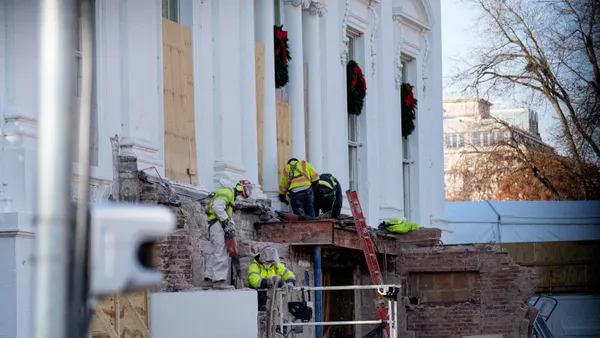Dive Brief:
- New Jersey advocacy groups and residents have filed a legal challenge to state rules that they say make it easier to build in flood-prone areas and to establish landfills for dredge spoils in wetlands, according to the Associated Press.
- Environment New Jersey, Save Barnegat Bay and local residents have said that state Department of Environmental Protection's Coastal Zone Management Act rules, enacted post-Superstorm Sandy, allow "too many people and buildings" to be in the path of future storms.
- The DEP said the groups' challenge lacks merit and that the Act's provisions "are both environmentally responsible and conducive to sound and safe coastal development," the AP reported. The DEP said the rules were designed to streamline regulations while maintaining environmental safeguards as New Jersey rebuilt after the 2012 storm.
Dive Insight:
"Hurricane Sandy should have been our wake-up call to realize unchecked development along our coastlines will only become costlier in the future due to sea level rise," Doug O'Malley, director of Environment New Jersey, told the AP. "Instead, DEP's finalized coastal zone rules will only greenlight more development in vulnerable coastal communities. DEP's arbitrary and capricious rules don't make sense to keep residents in our coastal communities safe."
The DEP rules make it easier to build or expand marinas with restaurants, as well as to erect piers and to build attractions on them. They also make it easier to build waterfront homes, including duplex or two-family houses, which include "minor" dredging projects.
After Superstorm Sandy, New Jersey also established a freeboard requirement, which dictates that buildings include a buffer between Federal Emergency Management Agency floodplain heights and the first floor of living space. Experts say that insurance companies set a homeowner’s insurance premiums and deductibles according to how high of a freeboard allowance owners include in their homes, and this has encouraged higher freeboard buffers.
But there has also been pushback against those FEMA maps, with critics saying they are overreaching and cost homeowners money. Property owners have challenged the new maps in two respects: the elevations and the changes that put some properties in higher hazard areas — both of which have resulted in higher insurance premiums.












